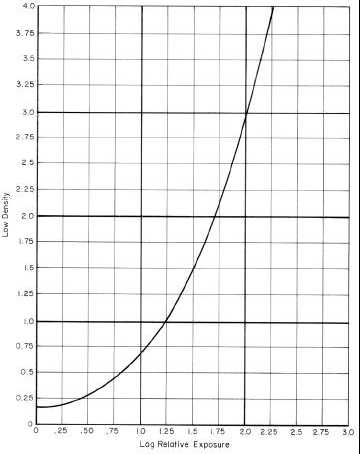T.O. 33B-1-1
6-31
Figure 6-14. Typical Characteristic Curve
6.4.1.6.1
The significance of the characteristic curve is that it shows that, within limits, a dense film is more sensitive to small
variations in exposure than a light film. Therefore, the dense film better shows small changes in subject contrast due to
discontinuities and geometric changes in the part. Characteristic curves can also be used to calculate exposure changes
needed to optimize a technique when altering film type or desired density.
6.4.1.7
Film Speed.
Film speed is a factor in determining the amount of radiation that a film must receive to obtain a given density. This
speed is usually measured relative to some standard. Generally, film speed varies with film grain, the larger grain film
being faster and the smaller grain film being slower. While film speed is sometimes an important consideration for
economy, normally the prime consideration is resolution of details. High-speed films, i.e., films with low signal-to-
noise ratios, should only be used when they are capable of meeting the resolution requirements of the inspection.
Where high-detail resolution is required, the slower, higher signal-to noise ratio films should be used without
exception.
6.4.1.8
Film contrast.
Film contrast is a measure of the difference in film density due to exposure to different amounts of radiation. When
exposed beneath a step wedge, a film with low contrast would show only minor changes in image density between one
step and another. A film with high contrast exposed under identical conditions would show sharply graduated changes
in image density between steps. The efficiency with which the emulsion responds to an increment in exposure varies
with the absolute value of the exposure. If a radiograph has high contrast, small differences in light transmission are
high and readily discerned by the eye; thus the image will reveal small discontinuities in the subject. The consequence

